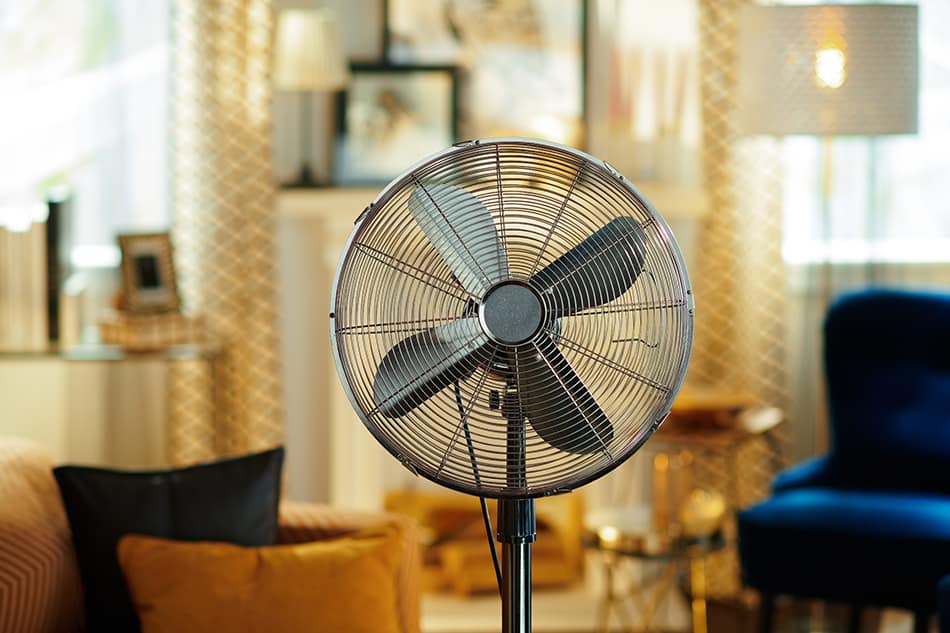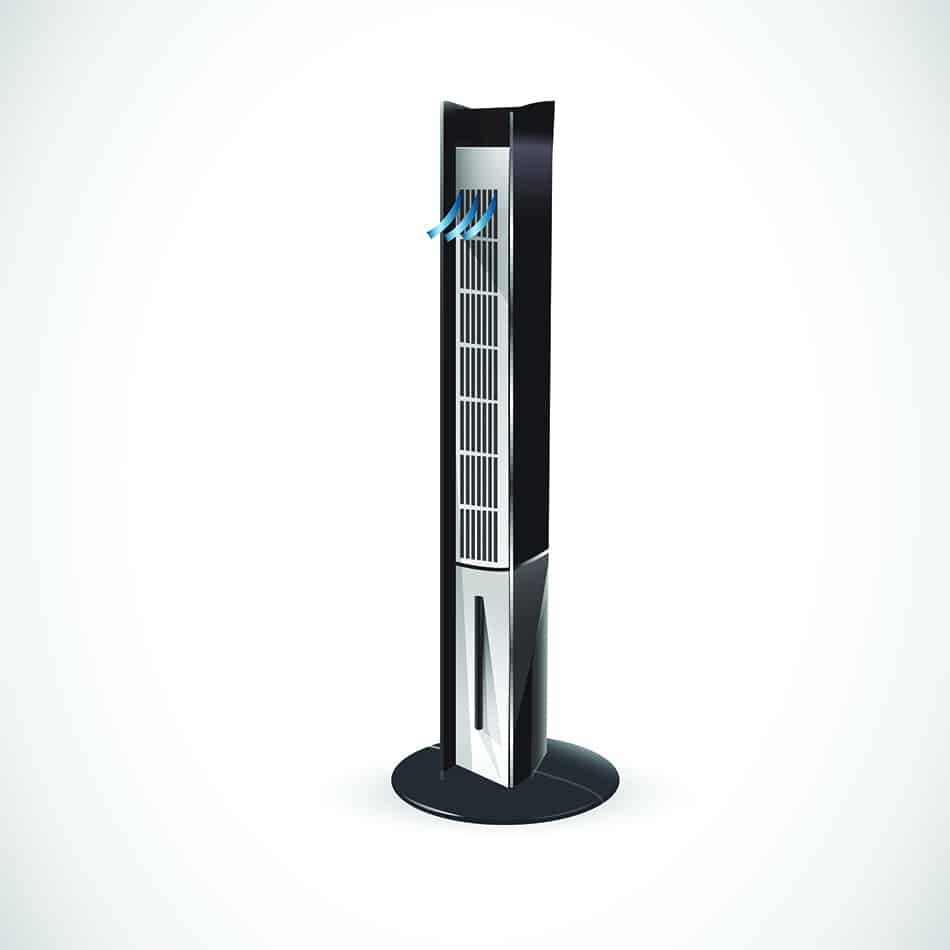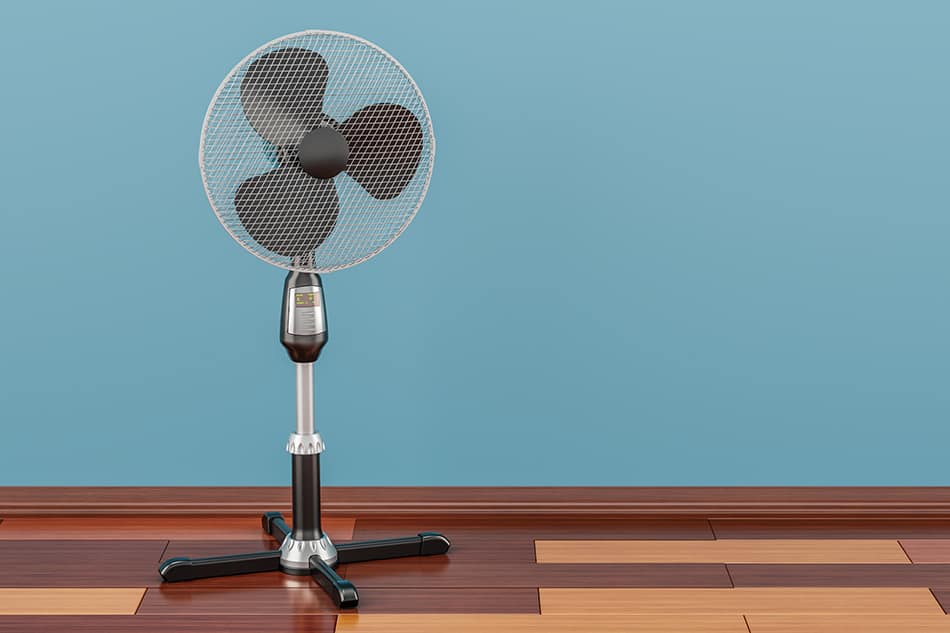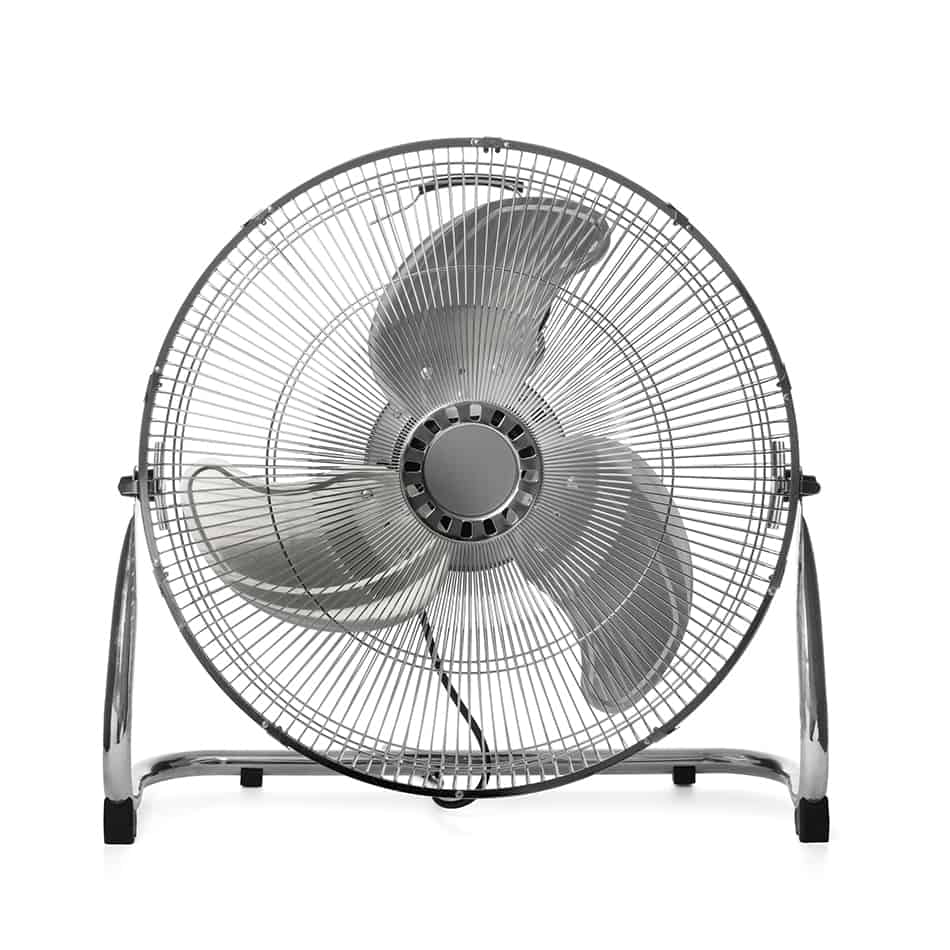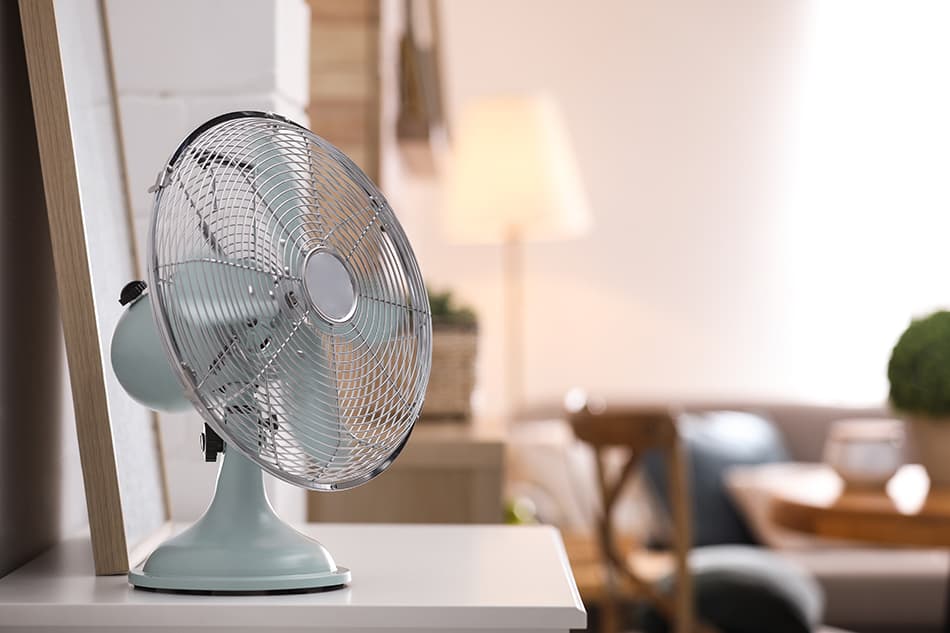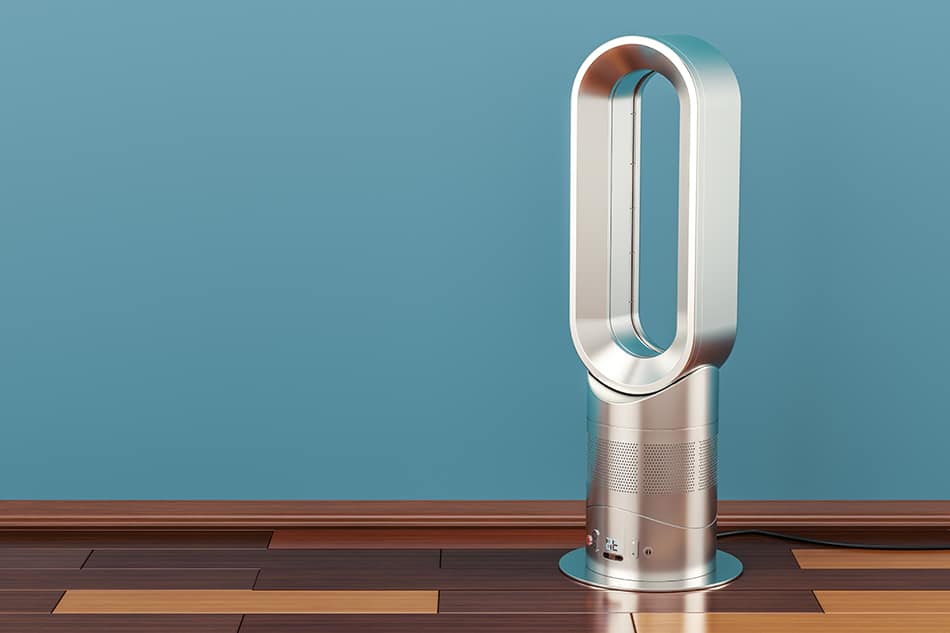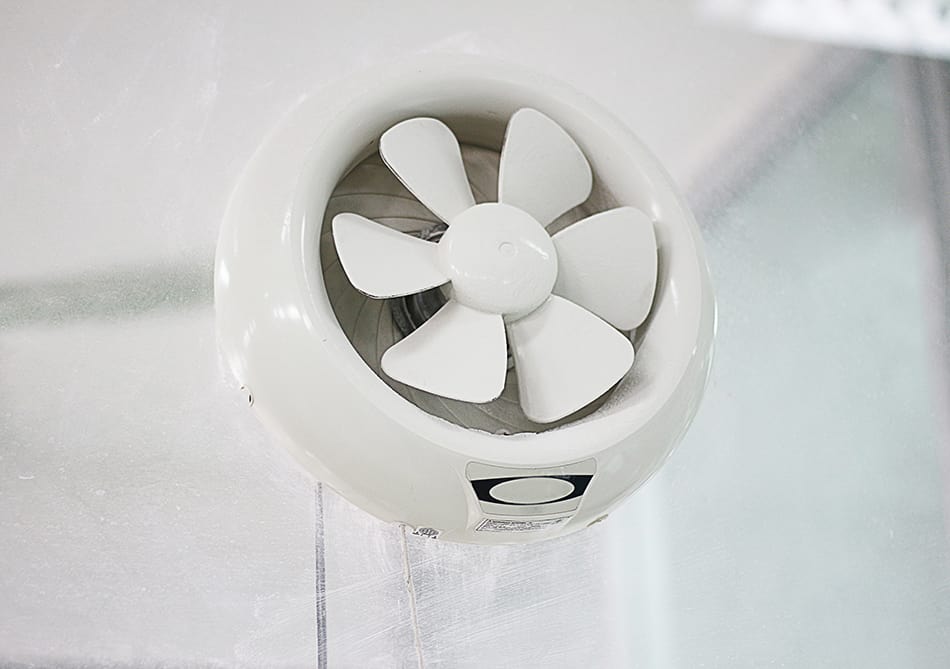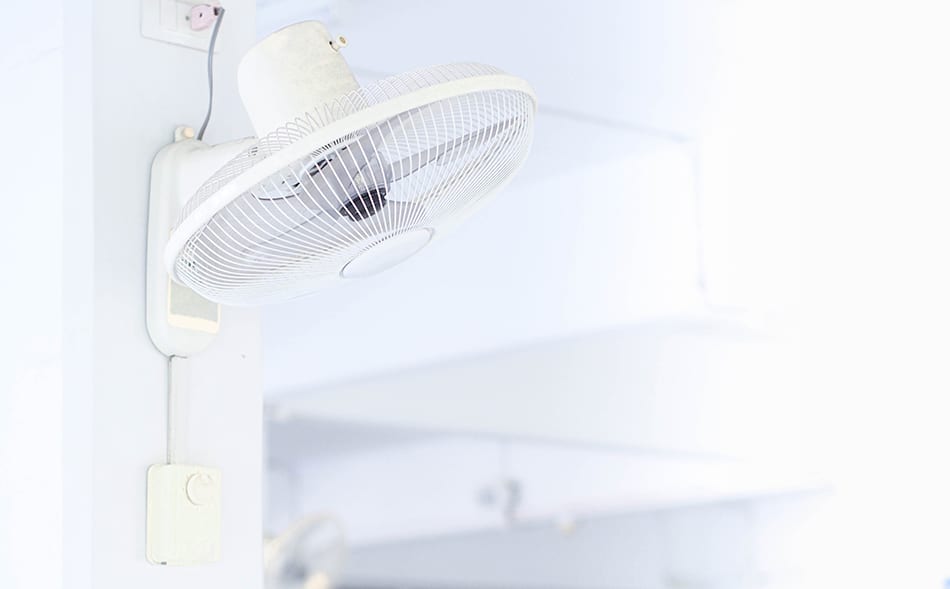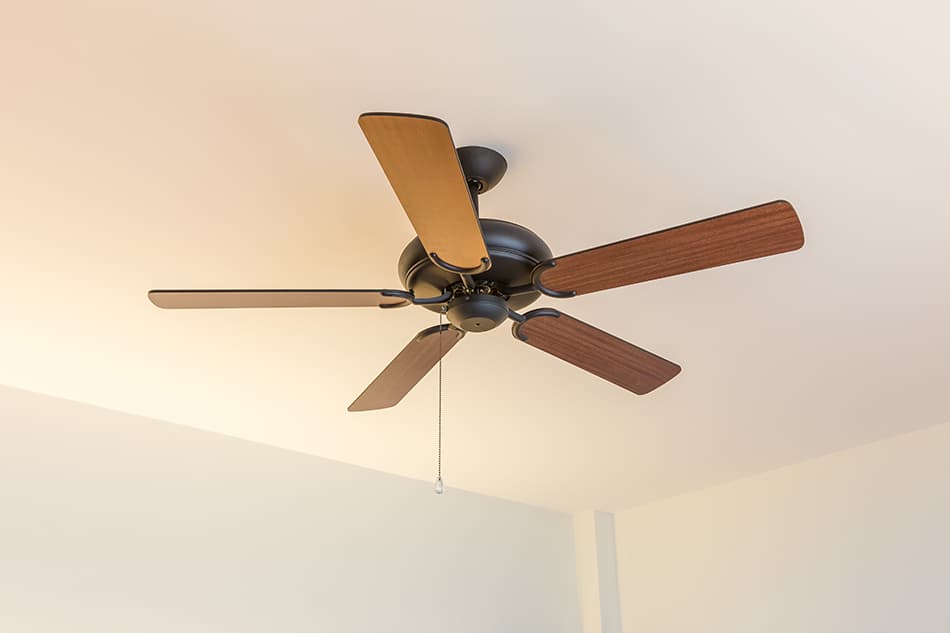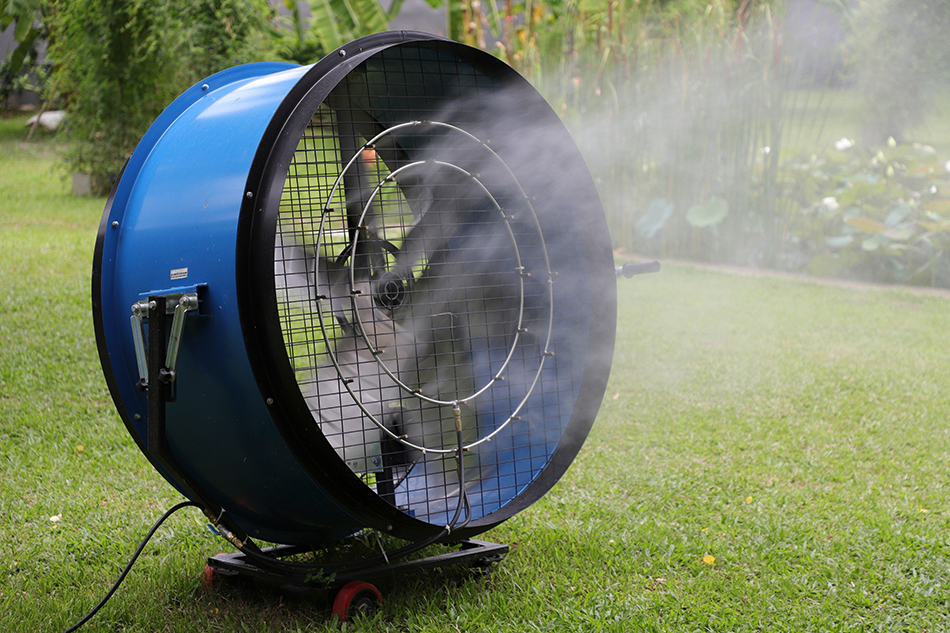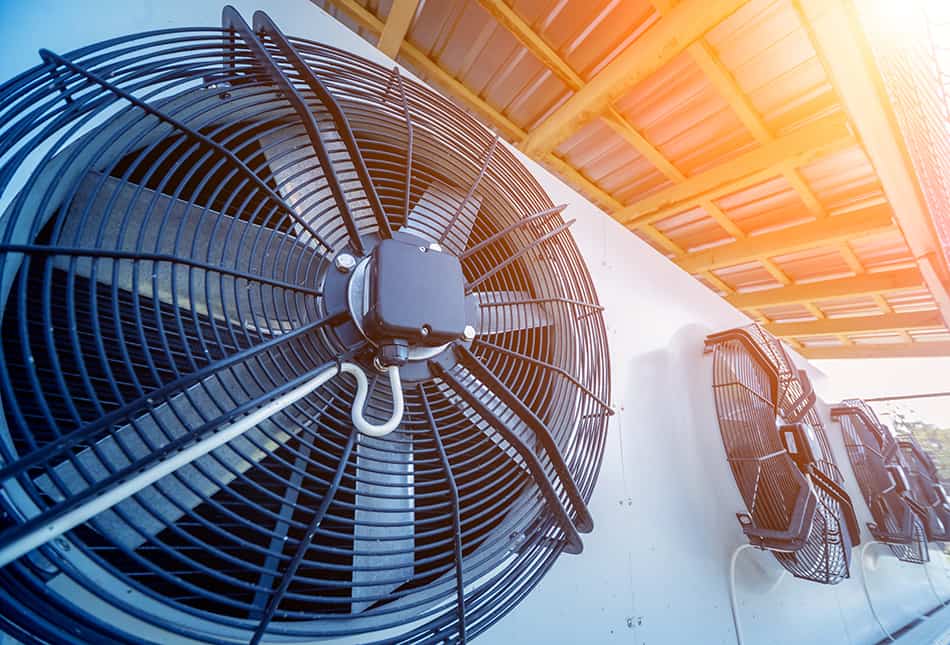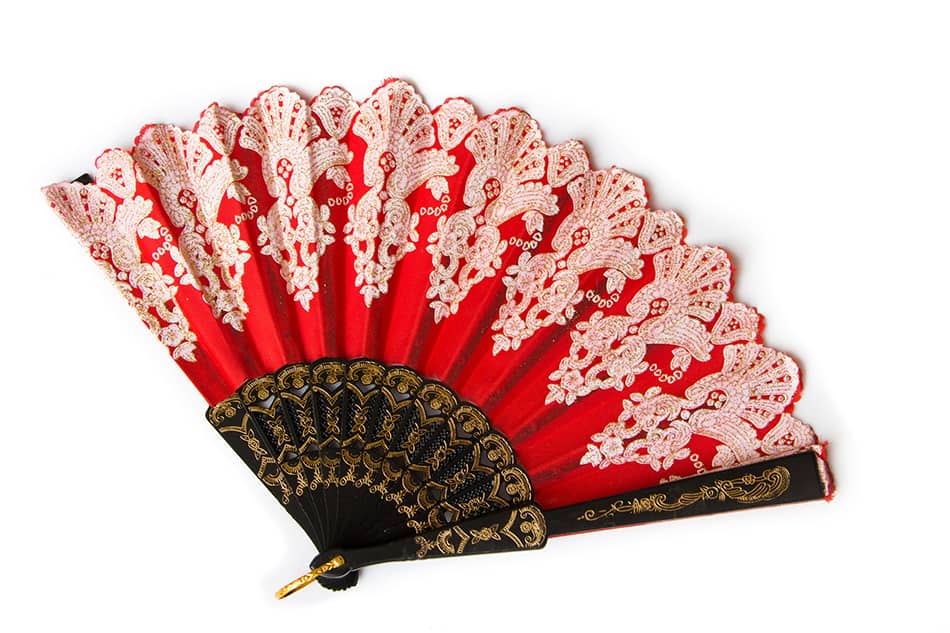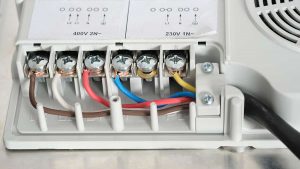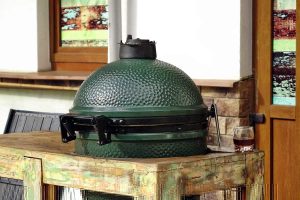Fans have been around for as long as you can imagine. The fan that you likely know today is the one where you plug into a wall outlet and switch on to dissipate heat. But it’s the predecessor of the handheld fan, which is believed to have originated back in 3000 B.C.
Archaeological findings show that the early Greeks used handheld fans not only to cool themselves but also for certain ceremonies. Eventually, those fans became the folding type which was a status symbol in Europe. During the 17th century, fans were only used for the noble and the royalty.
The next incarnation of fans would be the electric fan which has become a staple appliance, especially in tropical countries. Continue reading to know more about the different types of fans available in the market today.
Types of Fans for Every Room Type
Tower Fans
As you may deduce from its name, a tower fan is a tall and narrow fan. Its space-saving design means it is ideal to use in small rooms. It also comes with added features like built-in ionizers that help in purifying the air.
On average, a tower fan stands between 30 and 40 inches. Its base, meanwhile, takes up around one square foot of space. Because of its compact and space-saving design, you can place a tower fan in corners and narrow spaces where it won’t get in the way of people moving around.
Tower fans come in bladed and bladeless designs. Most models have motorized blades. But bladeless tower fans have hollow tubes conducting airflow at high velocities. This type of tower fan can yield benefits like quiet operation and safer design, which makes it ideal for families with small children.
Tower fans can rotate from side to side or oscillate, allowing to circulate airflow over a wider area. Tower fans can oscillate with an arc of 90 to 95 degrees, although you can find models that are capable of oscillating a full 360 degrees.
Most tower fans come with a rotating motor, which helps you distribute the air current around the room. Besides, you should get a button panel on top that will let you switch between speeds and modes of operation or even set a timer. If you are willing to go for a high-end model, expect a remote control and even a humidifier or a HEPA filter.
Tower fans can rotate from side to side or oscillate, allowing airflow to circulate over a wider area. Tower fans can oscillate with an arc of 90 to 95 degrees, although you can find models that are capable of oscillating a full 360 degrees.
Like desk fans, tower fans have at least three-speed settings. However, some units have additional settings that would enable users to enhance the amount of air being circulated in the room.
There are some downsides to tower fans. Most models tend to be relatively frail, especially if the “tower” is made from plastic rather than metal. They are also usually very hard to disassemble, so if you live somewhere dusty, you may end up with a lot of dirt hidden inside the fan.
Pedestal Fans
Pedestal fans and tower fans share several similarities. These are tall stand fan types and can cool a medium-sized room. These fans are also preferred for their versatility.
But pedestal fans are more powerful compared to tower fans, making them ideal for cooling larger rooms. And pedestal fans are a lot quieter than tower fans. These are some of the things you’ll appreciate about pedestal fans.
Pedestal fans are also known as ‘stand fans’ because they are incredibly tall electric fans. The average pedestal fan can be adjusted from a minimum height of 16 inches up to 48 inches or around 4 feet. This type of fan model usually features a set of between 3 to 5 blades inside a tight cage and held up by a sturdy, long pedestal. In turn, the pedestal is usually supported by a heavier disk that helps balance them out, preventing them from falling.
Despite its height, a pedestal fan is lightweight and portable. Unlike ceiling fans that are affixed in a permanent position, a pedestal fan can be easily moved around. It also commonly has an integrated oscillation function that greatly improves the distribution and transfer of air.
But don’t make the mistake of thinking that a pedestal fan is ideal for small rooms. Unlike a tower fan, a pedestal fan can take up a significant amount of space in a room. Moreover, it’s not exactly the safest choice for families with small children. Kids can put their fingers through the fan while it’s in operation.
Most pedestal fans also have an oscillating neck at the joining between the blades and the pedestal. These can usually cover an angle of up to 270° degrees, although most of them will only offer up to 180°.
The mechanisms inside a pedestal fan don’t usually offer as many bells and whistles as a tower fan. On the other hand, they will usually be more powerful and capable of moving much more air. Most models offer around 5 different speed settings. Besides, the pedestal is usually retractable, allowing you to adjust the speed. They offer advanced options such as timers or air filters that are rarer. Finally, these fans tend to be noisy when they are being used at high speeds.
Floor Fans
Sometimes, the situation calls for getting some breeze specifically around your feet – or at least, close enough to ground level. At first glance, floor fans look a lot like pedestal fans, just without the pedestal. Upon closer examination, you will notice that this also takes away any chance of installing an oscillating motor.
Like a desk fan, a floor fan is convenient and compact to be placed anywhere you like. It’s also commonly used outside the house, particularly in areas like balconies, patios, and terraces.
And unlike a ceiling fan, a floor fan does not require permanent installation.
Floor fans can be remarkably powerful and are usually capable of reaching very high speeds. Even if they don’t have a proper pedestal, most will come with a small tripod that keeps them upright.
This makes them an ideal choice for outdoor scenarios where AC would not even be an option. In many cases, if the air current is strong enough, it can help you keep mosquitoes away right at ankle height (which is exactly where the little devils love to strike the most).
Floor fans come in various shapes and sizes. Some of its more common types include window fans and box fans. There are also floor fans with a bladeless design.
On the other hand, most floor fans tend to be pretty loud, which may get in the way of enjoying a lighthearted chat by the sun porch. They can also be pretty dangerous for toddlers and small pets.
Table Fans / Desk Fans
Desk fans can be categorized into two types—the traditional desk fan or table fan and the air circulator. A desk fan or table fan normally has blades ranging from 6 to 12 inches in diameter. This type of fan has a standard electrical cord and three speed option. It also oscillates so it can keep a small to mid-sized room cool.
Perhaps the most portable option of all, table fans look like very small floor fans. However, they are significantly lighter and frailer. They are not designed to provide strong air currents outdoors: instead, their goal is to ensure a light breeze can hit your face directly while you are working at your desk.
In many tropical countries, table fans are almost synonymous with bureaucracy, as they are cheaper than full-floor AC systems in government offices. Newer models often include between 90 and 180 oscillations, and many also offer the opportunity to adjust the speed.
Two innovations to look out for in the table fan realm include USB outlets, which will allow you to power these fans directly from your computer or laptop. This will prevent you from wasting an outlet on yet another desktop appliance. Finally, many now come with a clip-on anchor, similar to that of a webcam, meant to help you secure the fan to a side of your computer screen.
On the other hand, an air circulator is a more powerful desk fan. It is also called a high-velocity desk fan. It is designed to circulate air throughout a room. It can cool an entire room, even on a hot summer day. It’s ideal for use along with an air conditioning unit as it can circulate cool air. While small enough to be placed on a desk, these portable fans can also provide more power and a cooling effect.
Yet despite its size and power, it is surprisingly quieter when in operation compared to a traditional desk fan. As such, it is also a bit more expensive compared to the traditional desk fan. This is ideal for use in a hot and humid office environment. There’s also a more compact version of an air circulator or the personal air circulator. It’s a cheaper and smaller air circulator that’s designed for use on a desk or cubicle.
Bladeless Fans
The newest arrival to this compilation of fan models is the bladeless fan. This type exists in fairly limited brands, and it was only launched just ten years ago. Just like the name indicates, a bladeless fan is essentially a completely blade-free appliance.
These are usually the same size as a small tower fan. Instead of a plastic tower, they come with an elongated, hollow loop that looks a bit like an antenna. Around this loop, a powerful extracting engine sucks in all the air, creating a strong but localized air current. Inside the loop, however, an inverse vacuum amplifies the speed of this air to up to 18 times and expels it back out.
The result is quite a powerful breeze, without any noise or the danger of spinning blades. The inside of the loop also serves as an ionizer and filtrating system, which will help your home remain fresh-smelling. Besides, these fans tend to look interesting and futuristic.
On the downside, bladeless fans remain quite rare and are significantly more expensive than their tower counterparts.
Exhaust Fans
The exhaust fan or propeller fan is different from the other types of fans in this list as its primary purpose is not to circulate air but more to prevent the build-up of excessive heat.
It is commonly found in bathrooms as it is also intended to purify the air from pollutants. It can also be placed in other parts of the house like the kitchen and bedroom.
An exhaust fan is a common fixture in bathrooms that has high levels of humidity and moisture. Excessive humidity, for one, can cause fogging on the mirrors. It can also prevent damage to wood and other materials in the building. In terms of hygiene, moisture can also hasten the growth of molds and mildew. These scenarios explain why it is important to have an exhaust fan in the bathroom.
As for the kitchen, this is also a part of the house where you’d want to have an exhaust fan. With an exhaust fan, heat and other kitchen fumes produced while cooking can be removed. You may also install an exhaust fan in your bedroom to serve as an alternate way of cooling the room. It can give your AC unit a well-deserved break, especially during the hot summer months.
Exhaust fans can be installed on the wall, window, or ceiling. Wall-mounted ones are designed to expel air directly outdoors. A ceiling-mounted fan can remove the air inside a room through a hole in the ceiling of a building’s attic.
Exhaust fans consist of fully metallic, ultra-resilient spinning blades. They are usually protected by a square or round case, which is then installed directly inside a wall or window. The blades on an exhaust fan must reach very high speeds to drag hot air and expel it outside of the house.
Most exhaust fan models are built for functionality rather than style. Because of this, they tend to be pretty ugly and uncreative – but this is okay, as they are often placed in a hidden corner of the house. As far as extra perks go, the most you will find is a timer or a thermostat, which will turn the fan automatically when certain temperatures are reached.
Wall Mounted Fans
A wall-mounted fan or simply wall fan is designed for small rooms where floor space is limited. It is compact and ideal for use in small offices, party halls, auditoriums, and warehouses.
Wall-mounted fans work very similarly to old-school pedestal fans. However, rather than placed directly on the floor, they are usually drilled to a wall or nearby column. While this will make them unmovable, it is also a great space-saving solution.
Usually, installing a wall-mounted fan is simpler than installing a TV rack. The fan itself is usually less delicate than a TV and will usually need only two or three drilling points. Most wall-mounted fans tend to have pretty powerful engines. As they are usually located in out-of-the-way corners, they can’t easily be adjusted with a button panel. Up until a few years ago, most had a switch at arm level. Nowadays, most come with remote control, which also allows you to regulate more complex timers or oscillator functions.
The safety offered by these fans will depend largely on the height of the ceiling and the amount of room you have to determine where it will be placed. In homes with low ceilings, wall-mounted fans need to be in an isolated corner to avoid accidentally harming the taller inhabitants of the house.
One of the primary differences between a wall fan and a ceiling fan is that the former is often enclosed in a cage to prevent the fan blades from causing harm to a passerby. It is also mounted onto a wall at around eye level and swivels back and forth to circulate air from one corner of the room to another.
There are also models or designs of wall fans that can be dismounted and placed on the ground for easy control. The side and top of the wall fan are the two common areas where the controls for speed and range of motion are placed in.
But unlike ceiling fans, a wall-mounted fan is not as efficient. Most wall-mounted fans have less powerful motors compared to ceiling fans. Therefore, a wall fan can’t circulate as much air as a ceiling fan.
Ceiling Fans
Ceiling fans have been around even before the introduction of electricity in households. It’s believed that this type of fan dates back to 500 B.C. in India. During those days, the ceiling fan was manually operated with the use of a cord.
In the 1800s, rotary ceiling fans were powered by a stream of running water. These early types of ceiling fans are still in existence in the southern regions of the United States. Electric ceiling fans were later invented in 1882 by Philip Diehl. Those ceiling fans had self-contained monitor units.
As the name indicates, a ceiling fan is usually mounted right in the middle of the ceiling of a room. It is designed to circulate air evenly across the room. It can also be useful during the winter months as it pushes warm air from the ceiling down into the room.
Ceiling fan sizes can range from the small 30-inch blade to as large as 60 inches in diameter. Most models also have an integrated lighting fixture designed to increase illumination in the room.
AC Motor Ceiling Fans
Motor ceiling fans are one of the most popular alternatives to AC in all sorts of homes. These are free-ranging sets of spinning blades that are usually attached directly to a home’s ceiling. Many combine a fan with a light bulb and can be connected to the home’s central wiring.
AC motor ceiling fans usually rotate in an anticlockwise direction. Some advanced models will allow you to adjust the speed of the rotating blades. In this case, they will come with a hanging string, and you may need to pull it several times until you get the desired speed.
It is important to remember that, to ensure a ceiling fan can be installed safely, the end of the fan will need to be over 8 feet above the ground.
DC Motor Ceiling Fans
A high-tech and energy-efficient alternative to AC motor ceiling fans, the DC version can work with the direct current rather than alternating current. Because of this, DC fans will need to use a converter before being connected to the home’s general wiring,
DC motor ceiling fans are not just better at saving energy, however. They also can spin both in clockwise and counterclockwise directions. When the blades are spinning counterclockwise, the fan will act as a traditional cooling appliance, as it will move hot air and cool it down.
When moving in a clockwise direction, the blades will draw the cool air towards the top of the room, sending hot air downwards. This will help heat the room rather than cool it and can be a great complement to a central heating system during the winter months.
Misting Fans
Misting fans are usually reserved for the outdoor parts of the house, such as the backyard or balcony.
At first glance, misting fans don’t look very different from pedestal fans. However, they can be a life-saving appliance in desert climates, such as those of Arizona and Texas. This is because misting fans combine a powerful air current with a thin spray of water droplets, which will create a very fresh mist around it.
Although significantly less powerful than a fully-featured AC system, misting fans can bring a room’s temperature all the way down to 77° F (25° C). To operate properly, misting fans will need access to both electricity and running water. Some “indoor models” come with their own attached water tanks.
If you can’t afford an air conditioner or if you don’t like to break the wall to install the air conditioning system, then you can settle for a good cooling alternative in a misting fan. This type of fan provides a cheaper way of cooling a room, especially during the intense summer.
However, you should be careful with the “indoor” label, as these fans are still not suited for any room that has other appliances that could be damaged by water.
Industrial Fans
Also called industrial blowers, an industrial fan is designed to promote the continuous flow of air. It’s not only used in the household but also for other industrial applications like drying, air cleaning, exhaust, and aeration, among others.
There are two kinds of industrial fans—axial and centrifugal. Axial fans use axial forces to facilitate the movement of air. Its blades have a central hub attached to the fan system. The central hub spins fast, causing the fluid inside the fan to move to the wheel shaft. On the other hand, a centrifugal fan makes use of centrifugal forces in operating. There’s a rotating disk within the machine with sharp blades mounted at correct angles. This arrangement helps in increasing gas or air pressure.
Hand Fans
Back in the old days, when there is no electricity or limited electricity, the only way to cool oneself in a windless space is using a hand fan. Nowadays, we rarely them in modern homes anymore and they tend to be used for decorating purposes, dancing, or when there is a power outage.
Conclusion
It is easy to dismiss fans as just a way to create a quick air current. Many fan models nowadays play other important roles around the house, such as ventilate or actively cool down the environment. Furthermore, there are many beautiful, powerful, and silent alternatives available. It all depends on what you need!
